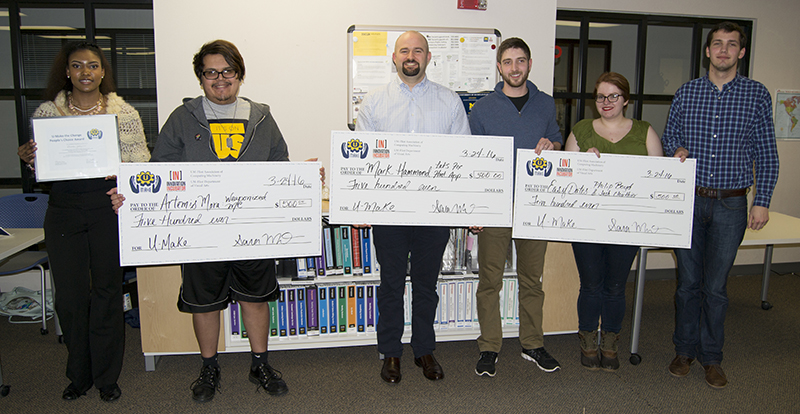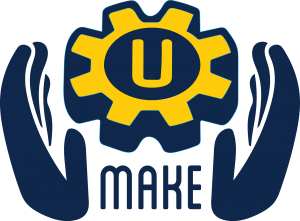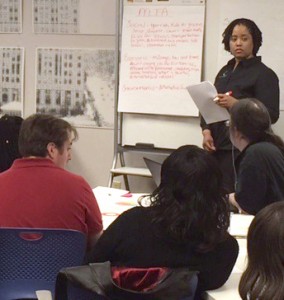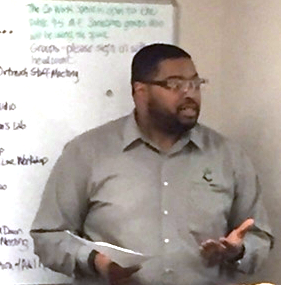By Sherry Hayden

Winners (left to right): Rhonda Jones, People’s Choice award; Artemis Mora, $500; Mark Hammond, $500; Josh Clouthier, Janice McCoy, Phil Boyd, $500.
UM-Flint students are an ingenious bunch. On March 24, 2016 at the Innovation Incubator, the public caught a glimpse of the exciting ideas happening here on our urban campus during the U Make the Change Competition.
Students presented innovative solutions to social problems, specifically in technology-based design, social impact, products, designs, and community-based art. Fifteen groups competed for prizes, but only four teams could be winners.
The judges were UM-Flint faculty, with lots of creative experience between them. Dr. Mark Allison is an Assistant Professor of Computer Science; Kurt Neiswender is a local architect who also teaches in Earth and Resource Science and Visual Communications departments; and Paula Nas teaches in the Economics Department and serves as Interim Director of University Outreach.
 Computer Science students Phil Boyd and Josh Clouthier teamed up with Janice McCoy, a graphic designer, to create an app that helps people come up with ideas for dates based on cost, activity level, time length, and location. The U Make judges were impressed with “Easy Dates” and awarded them a $500 prize.
Computer Science students Phil Boyd and Josh Clouthier teamed up with Janice McCoy, a graphic designer, to create an app that helps people come up with ideas for dates based on cost, activity level, time length, and location. The U Make judges were impressed with “Easy Dates” and awarded them a $500 prize.
They also awarded a $500 prize to Artemis Mora, for “Weaponized: Me,” a theatre project to help those with marginalized identities find the power of their unique voices to affect change. Mark Hammond won $500 with his smart phone application, “Let’s Fix Flint App” to connect volunteers with organizers of community engagement events.
Rhonda Jones won the People’s Choice award, voted by the majority of the 78 people who attended the competition. Her project, “Bottled Emotions,” recycled 5,000 water bottle caps into a large mosaic mural representing Flint’s lead-in-water crisis and the community response to overcome the issues. Rhonda won mentoring with a UM-Flint professor to assist in marketing her community-based art.
This was the second year of the U Make Competition, which began as a joint project of UM-Flint University Outreach and the UM-Flint Association for Computing Machinery. This year sponsors included the UM-Flint Department of Visual Arts, the Recreation Center, and Office of the Provost.

